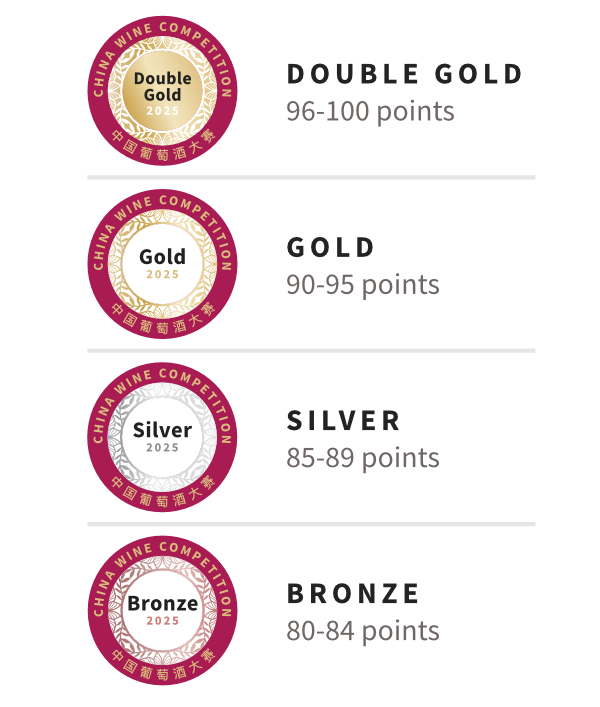November 10 , 2026, Hong Kong

China’s love affair with wine is not just built upon the palate preferences. Grab a seat, while we let you know about its consumption behavior.
Drinking wine is becoming a day to day habit for a lot of people. What started out as something that was just had during special occasions is turning into a routine for the people in China. The Chinese wine market is something that keeps on expanding year after year. From Baby Bloomers to Millennials to the legal Generation Z, everyone loves a glass of red or white after a long day, or just for fun. Even though some have a vast palate for wine, their tastes are quite peculiar.
The consumption of wine in China has drastically changed over the last decade. The youth of China now not only wants to taste the wine but also wants to know each and everything about the wine- from the story behind it to what is inside. Gen X and the millennials of China, having more exposure to international wine trends from their overseas travels, are responsible for spreading this growth. The young wine enthusiasts are having a profound impact on the wine industry to build the latest trends, and that is changing the consumer patterns rapidly!
Who’s drinking?
The demographic for wine drinkers in China are becoming younger in the coming years, which is causing a raking demand in mid-priced wines. Not only for the younger demographic, but also for the middle-class earners or people who are just starting out on their wine journey. The process through which wine is being demanded is also changing. The younger consumers tend to pick wine through online researches or surveys based on their likes and dislikes.
Since not everyone is a wine expert, the consumers usually end up picking well known foreign wines, or they tend to go for the brands that they’ve been recommended online or through family, friends, etc. Both, new and old wine drinkers who have a comparatively higher wage also go for high-end foreign brands. The middle class also ends up buying a small percentage of the high-end foreign brands for both the status of it and the trust factor, since the high-end foreign brand of wines is said to be of the perfect taste for everyone.
Taste and Preferences
The average age in between which wine is consumed most in China is 18-54. The Chinese are very particular about their flavors, be it food or wine. Research conducted by Beijing University of Agriculture suggests that most people in China prefer their wines half dry with lower tannins. Professor Li Demei, who carried out this research with his team found out that the Chinese taste buds usually settle on red wines with medium to lower acidity and tannin levels, as well as white wines with a slight sweetness and moderate acidity. Non experienced or new wine drinkers like a bit of sweetness to their wines so they can get used to the taste. Gender analysis also revealed that females are more tolerant with sweeter wines, while males mostly gravitate towards slightly bitter wines with more tannin.
Four key cooking styles of China
Different regions have different taste palates and wine isn’t an exception. The ones who enjoy a Sichuan cuisine prefer wines with smoky flavors, such as a South African Pinotage. People who have a staple of the Huaiyang cuisine prefer something with a grassy bitterness and apricot taste such as a crisp glass of Vinho Verde. The Cantonese, on the other hand, dislike sharp tannin and bitterness and tend to gravitate towards slightly sweeter and tangy flavors. And finally, the most tolerant of tannins are the ones who have a staple of a Shandong cuisine, or a specific likeness for it.
The Flavours
The survey further sheds light on the wines preferred by Chinese consumers who have less knowledge of wine. It said that white wines with a slight sweetness and moderate acidity, as well as red wines with medium to lower acidity, tannin levels, and some sweetness are preferred by that particular group.
They ran a gender analysis in which it showed that the female consumers are more tolerant of wines with higher sweetness while male consumers are more inclined towards bitterness and tannins.

Quality- A reason to buy
Chinese consumers consider the “Quality factor” number one priority when it comes to buying a bottle of wine. After saying this, Professor Li also added that the consumers don’t exactly know, how to define quality in wine, and are unfamiliar with the quality indicators, such as its aroma, tannin level/ body, and balance.
The Brands- another reason to buy
A survey shows that the mass consumers wouldn’t go for the imported wine brands such as Lafite and Penfolds, but will stick to the domestic wine brands such as GreatWall and Changyu. However, as per the research, Chinese consumers are more aware of foreign brands than domestic brands and wineries.
The Sommelier services
The consumption patterns also include the Chinese consumers getting a hold on to the idea of knowing the wines they are consuming and the story behind it by the help of a personal sommelier service. The sommelier acts as both a wine advisor as well as a delivery service guy. For example, if you are planning to dine out in the city of Chengdu, where the service was first introduced, you could order a sommelier to meet you at the restaurant, advise on food and wine pairings, and deliver any wine that has been recommended.
The potential of social media
More than any nation in the world, China understands the potential of e-commerce and it is growing at a rapid pace. The two dominant social media platforms that are very popular amongst the wine lovers of China are Weibo and Wechat. There are 750m online consumers who are being reached via social media.
White vs. Red, what’s winning?
In terms of what wines are drunk the most in China, red wines are taking the top spot. About 54.6% wine sales contribute to red wines, 31.2% to white and a mere 14.2% to rosé. This is usually because red wines are the mainland consumptions in China and the reason it is that it’s much cheaper and more widely sold in the country. Whereas, white wine and rosé are looked at as more posh wines to be had during occasions, celebrations, etc. At a wide angle, red wine income in the country is much higher than white wine income.
As the years have gone by and wine drinkers in China have increased, the average amount spent on wine has increased. It’s no longer kept in a household for special occasions but instead drank more often than you’d expect.
Sparkling wines are booming now than ever
China has increased consuming sparkling wines even more than champagne if we go through the statistics. Italian sparkling wines have been the main driver of this growth and represent around 60% of the China wine market. They are doing particularly well in second and third-tier cities, thanks to low pricing, allowing for higher margins than competing categories such as beer. Sparkling wine still represents a very small percentage of wine consumption in China and there is clearly space for growth in the future.
When choosing a bottle of wine in China, more than half which accounted to almost 54.6% of those surveyed preferred red wine in comparison to the white wine which was claimed to be liked by the 31.2% and also rosé, which was preferred by the rest 14.2%.
IWSR that is the “International Wine & Spirits Record” predicts that China’s Wine Imports will be growing to around 8% in the year 2019. So, the consumption of wine in China is here to stay and is bound to grow!
Sources:
The 2025 China Competitions results are now live. View 2025 winners.
Key Dates
Super Early Bird Deadline: May 20, 2026
Early Bird Deadline: July 31, 2026
Regular Deadline: October 14, 2026
Warehouse Deadline: October 22, 2026
Judging Date: November 10, 2026
Winners Announcement: November 24, 2026



